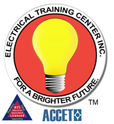
Class Location: 65 Elm Street, Copiague, NY 11726
(Walking distance to the Copiague Train Station)
Starts: February 13, 2023
Call us on: 631-226-8021

Expected End Date: June 12, 2023
Hours: Mondays & Wednesdays 6:00pm - 9:00pm
Total Hours: 100
The Transit work preparation classes will enable you to develop some of the necessary skills required to advance your career towards a technical related position
Becoming gainfully employed in the transit industry take more preparation than simply filling out a job application. It is essential to understand how the Transit industry and potential employers operate. Your trade skills are extremely important, but all employers are also looking for those who are eager to advance and demonstrates positive personal characteristic. This section will discuss the skills needed to pursue employment successfully.
The ASVAB tests cover general science, arithmetic reasoning, word knowledge, paragraph comprehension, numerical operations, coding speed, auto and shop information, mathematics knowledge, mechanical comprehension and electronics information.
In the Construction trades, workers must use math day in and day out. Math is used to calculate pipe length, read plans and lay out fixtures. Construction of floor systems and frame wall and ceiling require math. In some cases algebra, geometry, and even trigonometry may be required. This section reviews basic mathematical procedures and provides the opportunity to practice mathematical tasks related to construction activities.
During the installation and maintenance of equipment, technicians work with a variety of fasteners, hardware, and wiring terminations. These components must be carefully selected for the specific application and installed according to accepted practices. Using the correct components ensures that the assembled system will perform properly, and will not fail because of the wrong choice of component or its incorrect installation.
Every profession has its tools. A surgeon uses a scalpel, a teacher uses a whiteboard, and an accountant uses a calculator. The construction trades require a broad collection of hand tools, such as hammers, screwdrivers and pliers, and almost every craft worker uses. Even if you are already familiar with some of these tools, everyone needs to learn how to select, maintain, and use the safely. A quality tool may cost more up front, but if properly maintained, it will last for years intact.
Power tools are used in almost every construction trade to make holes; to cut, smooth, and shape materials; and even to demolish pavement. All construction workers are certain to use power tools on the job eventually. This module provides and overview of the common types of power tools and how they work. It also describes the proper techniques required to safely operate this tools.
Lifting, Stacking, transporting, and unloading material such as brick, pipe, steel, and various supplies, are routing tasks on a job site. Whether performing these task manually or with the aid of specialized equipment, workers must follow basic safety guidelines to keep themselves and their co-workers safe. This section provides guidelines for using the appropriate PPE for the material being handled and using proper procedures and techniques to carry out the job.
In order to work the electricity, you need to know how it is produced and how it acts in the electrical circuits. The electrical circuit contains, at a minimum source voltage, a load, and conductors, to carry the electrical current. Electricity is all about cause and effect of circuit units of measure.